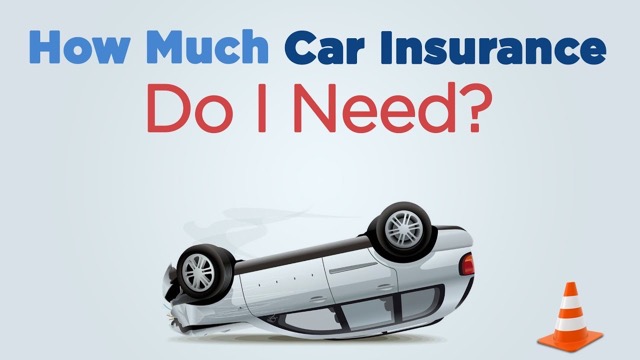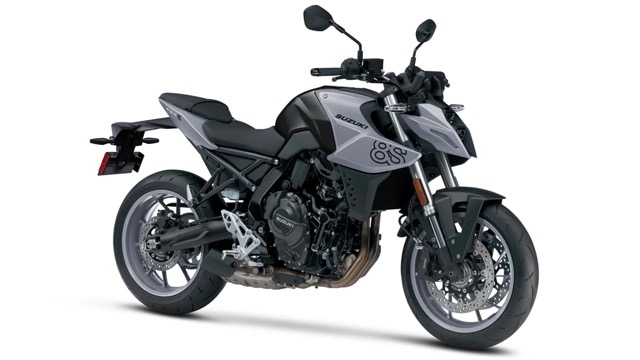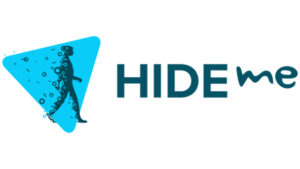How Much Car Insurance Do I Need Each state requires a minimum level of car insurance to comply with financial responsibility laws. The primary mandated coverage is liability insurance, which provides protection for damage and injuries caused to others in an accident. The typical minimum limits for liability insurance include $25,000 per person and $50,000 per accident for bodily injury, as well as $25,000 for physical damage. However, the specific requirements of your state may differ. Understanding your state’s requirements and evaluating your individual circumstances is crucial in determining the appropriate amount of car insurance needed.
Outlines Of Guide
ToggleHow Much Car Insurance Do I Need?
- Most states require that car owners buy liability car insurance, but coverage requirements vary by state.
- Depending on where you live, you may be required to buy additional types of coverage, such as uninsured motorist coverage, personal injury protection or medical payments coverage.
- Drivers who lease or finance their vehicles are usually required to buy collision and comprehensive insurance.
- Compare car insurance quotes to find the car insurance you need at the most affordable price.
Car Insurance Requirements by State
| State | Bodily injury liability (per person/per accident) | Property damage liability (per accident) | Other car insurance requirments |
|---|---|---|---|
| Alabama | $25,000 per person $50,000 per accident |
$25,000 | None |
| Alaska | $50,000 per person $100,000 per accident |
$25,000 | None |
| Arizona | $25,000 per person $50,000 per accident |
$15,000 | None |
| Arkansas | $25,000 per person $50,000 per accident |
$25,000 | None |
| California | $15,000 per person $30,000 per accident |
$5,000 | None |
| Colorado | $25,000 per person $50,000 per accident |
$15,000 | None |
| Connecticut | $25,000 per person $50,000 per accident |
$25,000 | Uninsured/underinsured motorist bodily injury: $25,000 per person $50,000 per accident |
| Delaware | $25,000 per person $50,000 per accident |
$10,000 | Personal injury protection: $15,000 per person $30,000 per accident |
| Florida | $10,000 per person $20,000 per accident |
$10,000 | Personal injury protection: $10,000 |
| Georgia | $25,000 per person $50,000 per accident |
$25,000 | None |
| Hawaii | $20,000 per person $40,000 per accident |
$10,000 | Personal injury protection: $10,000 |
| Idaho | $25,000 per person $50,000 per accident |
$15,000 | None |
| Illinois | $25,000 per person $50,000 per accident |
$20,000 | Uninsured motorist bodily injury: $25,000 per person $50,000 per accident |
| Indiana | $25,000 per person $50,000 per accident |
$25,000 | None |
| Iowa | $25,000 per person $40,000 per accident |
$15,000 | None |
| Kansas | $25,000 per person $50,000 per accident |
$25,000 | Personal injury protection: $4,500Uninsured/underinsured motorist bodily injury: $25,000 per person $50,000 per accident |
| Kentucky | $25,000 per person $50,000 per accident |
$25,000 | Personal injury protection: $10,000 |
| Louisiana | $15,000 per person $30,000 per accident |
$25,000 | None |
| Maine | $50,000 per person $100,000 per accident |
$25,000 | Medical payments: $2,000Uninsured/underinsured motorist bodily injury: $50,000 per person $100,000 per accident |
| Maryland | $30,000 per person $60,000 per accident |
$15,000 | Personal injury protection: $2,500Uninsured/underinsured motorist bodily injury: $30,000 per person $60,000 per accident Uninsured motorist property damage: |
| Massachusetts | $20,000 per person $40,000 per accident |
$5,000 | Personal injury protection: $8,000Uninsured motorist bodily injury: $20,000 per person $40,000 per accident |
| Michigan | $50,000 per person $100,000 per accident |
$10,000 | Personal injury protection: $250,000Property protection Insurance: $1 million |
| Minnesota | $30,000 per person $60,000 per accident |
$10,000 | Personal injury protection: $40,000Uninsured/underinsured motorist bodily injury: $25,000 per person $50,000 per accident |
| Mississippi | $25,000 per person $50,000 per accident |
$25,000 | None |
| Missouri | $25,000 per person $50,000 per accident |
$25,000 | Uninsured motorist bodily injury: $25,000 per person $50,000 per accident |
| Montana | $25,000 per person $50,000 per accident |
$20,000 | None |
| Nebraska | $25,000 per person $50,000 per accident |
$25,000 | Uninsured/underinsured motorist bodily injury: $25,000 per person $50,000 per accident |
| Nevada | $25,000 per person $50,000 per accident |
$20,000 | None |
| New Hampshire | $25,000 per person $50,000 per accident |
$25,000 | Medical payments: $1,000Uninsured/underinsured motorist bodily injury: $25,000 per person $50,000 per accident |
| New Jersey | $25,000 per person $50,000 per accident |
$25,000 | Personal injury protection: $15,000Uninsured/underinsured motorist bodily injury: $25,000 per person $50,000 per accident Uninsured motorist property damage: |
| New Mexico | $25,000 per person $50,000 per accident |
$10,000 | None |
| New York | $25,000 per person $50,000 per accident |
$10,000 | Personal injury protection: $50,000Uninsured/underinsured motorist bodily injury: $25,000 per person $50,000 per accident |
| North Carolina | $30,000 per person $60,000 per accident |
$25,000 | Uninsured motorist bodily injury: $30,000 per person $60,000 per accidentUninsured motorist property damage: $25,000 |
| North Dakota | $25,000 per person $50,000 per accident |
$25,000 | Personal injury protection: $30,000Uninsured/underinsured motorist bodily injury: $25,000 per person $50,000 per accident |
| Ohio | $25,000 per person $50,000 per accident |
$25,000 | None |
| Oklahoma | $25,000 per person $50,000 per accident |
$25,000 | None |
| Oregon | $25,000 per person $50,000 per accident |
$20,000 | Personal injury protection: $15,000Uninsured motorist bodily injury: $25,000 per person $50,000 per accident |
| Pennsylvania | $15,000 per person $30,000 per accident |
$5,000 | Medical benefits: $5,000 |
| Rhode Island | $25,000 per person $50,000 per accident |
$25,000 | None |
| South Carolina | $25,000 per person $50,000 per accident |
$25,000 | Uninsured motorist bodily injury: $25,000 per person $50,000 per accidentUninsured motorist property damage: $25,000 |
| South Dakota | $25,000 per person $50,000 per accident |
$25,000 | Uninsured/underinsured motorist bodily injury: $25,000 per person $50,000 per accident |
| Tennessee | $25,000 per person $50,000 per accident |
$25,000 | None |
| Texas | $30,000 per person $60,000 per accident |
$25,000 | None |
| Utah | $25,000 per person $65,000 per accident |
$15,000 | Personal injury protection: $3,000 |
| Vermont | $25,000 per person $50,000 per accident |
$10,000 | Uninsured/underinsured motorist bodily injury: $50,000 per person $100,000 per accidentUninsured motorist property damage: $10,000 |
| Virginia | $30,000 per person $60,000 per accident |
$20,000 | Uninsured/underinsured motorist bodily injury: $30,000 per person $60,000 per accidentUninsured motorist property damage: $20,000 |
| Washington | $25,000 per person $50,000 per accident |
$10,000 | None |
| Washington, D.C. | $25,000 per person $50,000 per accident |
$25,000 | Uninsured motorist bodily injury: $25,000 per person $50,000 per accidentUninsured motorist property damage: $5,000 |
| West Virginia | $25,000 per person $50,000 per accident |
$25,000 | Uninsured motorist bodily injury: $25,000 per person $50,000 per accidentUninsured motorist property damage: $25,000 |
| Wisconsin | $25,000 per person $50,000 per accident |
$10,000 | Uninsured motorist bodily injury: $25,000 per person $50,000 per accident |
| Wyoming | $25,000 per person $50,000 per accident |
$20,000 | None |
Which States Don’t Require Car Insurance?
- New Hampshire does not require car insurance, but if you’re in an at-fault accident you must prove you have adequate funds to fulfill the state’s financial responsibility law. This could include buying car insurance.
- South Carolina law allows you to legally drive without auto insurance if you meet certain qualifications and pay $600 to register an uninsured vehicle.
- Virginia permits you to pay a fee of $500 to register your car as an uninsured motor vehicle.
Is Minimum Car Insurance Coverage Enough?
You are required to purchase at least the minimum car insurance mandated by your state. However, state minimums are often insufficient and will not cover the costs of repairing your own car. If you desire better coverage, you will need to purchase more than the minimum requirements.
| Coverage | Adequate | Good | Even better |
|---|---|---|---|
| Liability car insurance | State minimum | $100,000 per person for bodily injury liability
$300,000 per accident for bodily injury liability $100,000 for property damage |
$250,000 per person for bodily injury liability
$500,000 per accident for bodily injury liability $250,000 for property damage |
| Uninsured/underinsured motorist coverage | State minimum | $100,000 per person for bodily injury liability
$300,000 per accident for bodily injury liability |
$250,000 per person for bodily injury liability
$500,000 per accident for bodily injury liability |
| Personal injury protection (PIP) | State minimum | $40,000 | State maximum |
| Collision coverage | Not required | Recommended | Recommended |
| Comprehensive coverage | Not required | Recommended | Recommended |
The Cheapest Car Insurance Companies 2025
Best Car Insurance To Look Forward
Types of Auto Insurance Coverage
Liability Insurance
Liability insurance is a crucial type of insurance that provides coverage for injuries and property damage resulting from accidents caused by the policyholder. This kind of insurance also covers legal defense costs, settlements, or judgments if the policyholder is sued due to an accident. Liability insurance can be purchased by individuals or businesses to protect them against unforeseen circumstances that could result in significant financial losses. It is vital to have liability insurance as it not only offers financial protection but also peace of mind. Without it, individuals and businesses can face severe financial consequences if they are found liable for damages resulting from an accident.
Liability car insurance includes two different types of coverage packaged together:
- Bodily injury liability pays for injuries to other drivers, their passengers and any hurt pedestrians if you’re at fault for an accident.
- Property damage liability pays for damage to another individual’s property, including their vehicle, if you cause an accident.
Here are a few examples of what liability insurance covers:
- You rear end another car at a traffic light and cause damage.
- You crash into a neighbor’s fence.
- You are responsible for a car accident and the other driver is injured.
Most states mandate a minimum amount of liability insurance, except for New Hampshire, South Carolina, and Virginia, which have limited liability insurance requirements in specific situations. For instance, California requires liability insurance of at least $15,000 for bodily injury to an individual, $30,000 for bodily injury to multiple individuals in a single car accident, and $5,000 for property damage (expressed as 15/30/5).
The issue is that these sums are not enough if you are responsible for a major car accident. $5,000 in property damage won’t cover the full cost of someone else’s car, and if you cause a car accident with multiple injuries, medical expenses can surpass $30,000. You will be responsible for any expenses exceeding your coverage limits.
How much liability insurance should I buy?
It’s advisable to purchase sufficient liability insurance to protect your assets in the event of a lawsuit resulting from a car accident. In California, opting for a policy with 250/500/100 coverage is preferable to the minimum required by the state. If you need additional liability coverage beyond your existing auto and home insurance, you may want to consider obtaining an umbrella insurance policy, which can provide an extra $1 million (or more) in liability protection at a reasonable cost.
Uninsured Motorist Insurance
Some states mandate uninsured motorist (UM) coverage, while it is optional in others. This insurance provides coverage for your medical expenses in the event of an accident with a driver who lacks liability insurance or has insufficient coverage. If UM is not mandatory in your state, you may usually decline the coverage in writing.
If UM is available in your state, this is good coverage to have. UM coverage pays for:
- Medical expenses for you and your passengers.
- Lost wages if you cannot work because of injuries suffered in a car accident.
- Funeral expenses.
- Pain and suffering of you or your passengers.
- Your vehicle damage (depending on your state), if you have purchased uninsured motorist property damage coverage.
Uninsured motorist insurance provides no coverage for the uninsured driver responsible for the accident. They are responsible for their own expenses.
How much uninsured motorist coverage should I buy?
Typically, you will need to buy UM in quantities that correspond to your liability insurance. For instance, if you have 250/500/100, you will need to purchase an equal amount of UM coverage.
Collision and Comprehensive Insurance
You will require collision and comprehensive insurance to cover your car repair expenses, including car accidents, theft, vandalism, animal collisions, falling objects, fires, floods, and hail damage. If you have a car loan or lease, your lender or leasing company will likely mandate the purchase of both types of insurance.
How much collision and comprehensive insurance should I buy?
Both types of coverage will pay for the expense of fixing or substituting your vehicle in case it is harmed by a situation included in the policy. Opt for a higher deductible amount if you wish to reduce expenses, as this is the sum you will personally cover towards repairs when making an insurance claim. For instance, opting for a $1,000 deductible will lead to slightly lower premiums in comparison to a $500 deductible.
Personal Injury Protection
Personal injury protection (PIP) provides coverage for medical expenses for both the policyholder and passengers regardless of who is at fault in a car accident. It also includes compensation for lost wages, funeral costs, and replacement services that the injured party is unable to perform, such as childcare or cleaning services. PIP is mandatory in some states as part of their “no-fault auto insurance” laws, while in other states it can be purchased as an optional coverage.
How much PIP insurance should I buy?
PIP rules vary by state and it’s not sold in all states. PIP options range from basic to extended:
- Basic Florida PIP covers 80% of your medical bills and 60% of lost wages and replacement services
- Extended Florida PIP covers 100% of medical bills and 80% of lost wages and replacement services
If PIP is optional in your state, you can decline it if you have a good health insurance plan. But PIP has some perks your health insurance won’t provide, such as reimbursement for services and lost wages.
Medical Expenses Coverage
Medical payments coverage, also known as MedPay, is a form of insurance that covers medical expenses and other costs for you and your passengers regardless of who caused the car accident. Some states, such as Pennsylvania, Maine, and New Hampshire, require MedPay to be included in car insurance policies.
How much MedPay should I buy?
MedPay is an optional type of car insurance that covers medical expenses for the driver and passengers involved in a car accident, regardless of who was at fault. In states where it is available, MedPay is typically sold in small amounts of coverage that range from $1,000 to $5,000. While this may not cover all medical costs associated with an accident, it can provide some financial relief and peace of mind during a stressful time. It’s important to note that MedPay is not a substitute for health insurance, but rather a supplement to it.
Optional Car Insurance Coverage Types
A good starting point for a car insurance policy includes liability insurance, uninsured motorist coverage, medical payments, and collision and comprehensive insurance. However, there are additional coverage types to consider to address any gaps in your policy.
Gap insurance
If your car is totaled due to a problem covered by your policy, such as a car accident or fire, gap insurance covers the difference between the actual cash value of your car and how much you owe on the loan or lease. For example, if you have $15,000 outstanding on your loan but your car’s value was $13,000, this coverage pays the $2,000 gap.
Rental reimbursement insurance
Rental reimbursement insurance covers the cost of a rental car or alternative transportation, such as train and bus fare, while your car is being repaired for a policy-covered issue.
Roadside assistance insurance
Roadside assistance insurance covers the cost of services such as towing, jump-start, fuel delivery, or locksmith if your car experiences a breakdown or if you encounter other issues like locking your keys in the car.
How to Buy Car Insurance
The typical annual cost for car insurance with liability, collision, and comprehensive coverage is $1,601, as per a car insurance cost analysis by Forbes Advisor. However, it’s important to consider more than just the cost when shopping for car insurance. Different auto insurance companies use varying methods to calculate their rates, leading to a significant price range. It’s advisable to compare quotes from multiple companies, which can be obtained online or by contacting an independent agent.
Ensure that you inquire about discounts for car insurance. Various types of discounts are available from insurance companies to entice customers, including those for good drivers, car safety, and multi-policy, as well as discounts for full payment or opting for paperless transactions. Additionally, it’s important to evaluate a company’s customer service, as the top car insurance companies combine competitive pricing with excellent customer service to ensure a seamless insurance claim process in the event of a car accident.
How Much Car Insurance Do I Need 2025 Faqs
What states require PIP and UM coverage?
The following states require that car owners purchase personal injury protection (PIP) and/or uninsured motorist (UM) coverage.
| State | PIP | UM |
|---|---|---|
| Connecticut | ✓ | |
| Delaware | ✓ | |
| Florida | ✓ | |
| Hawaii | ✓ | |
| Illinois | ✓ | |
| Kansas | ✓ | ✓ |
| Kentucky | ✓ | |
| Maine | ✓ | |
| Maryland | ✓ | ✓ |
| Massachusetts | ✓ | ✓ |
| Michigan | ✓ | |
| Minnesota | ✓ | ✓ |
| Missouri | ✓ | |
| Nebraska | ✓ | |
| New Hampshire | ✓ | |
| New Jersey | ✓ | ✓ |
| New York | ✓ | ✓ |
| North Carolina | ✓ | |
| North Dakota | ✓ | ✓ |
| Oregon | ✓ | ✓ |
| South Carolina* | ✓ | |
| South Dakota | ✓ | |
| Utah | ✓ | |
| Vermont | ✓ | |
| Virginia* | ✓ | |
| Washington, D.C. | ✓ | |
| West Virginia | ✓ | |
| Wisconsin | ✓ | |
| *South Carolina and Virginia drivers can pay an uninsured motor vehicle fee to forgo coverage. | ||
What Types of Car Insurance Are Mandatory?
Liability insurance, comprising bodily injury liability coverage and property damage liability coverage, is a legal requirement in almost every state. Certain states also mandate car owners to have one or more specific types of auto insurance.
- Uninsured motorist insurance
- Personal injury protection (PIP)
- Medical payments coverage (MedPay)
What Deductible Should I Choose?
Select a car insurance deductible that corresponds to your ability to cover damage costs yourself. Opting for a higher car insurance deductible, such as $1,500 or $2,000, will result in reduced rates, but you will have to bear higher out-of-pocket expenses in the event of a claim. Conversely, a lower deductible, like $250 or $500, will lead to higher rates, but your out-of-pocket expenses following a claim will be lower. For instance, if your vehicle sustains $5,000 in damage due to a fallen tree and you have comprehensive coverage, you can file a claim for repairs. With a $500 deductible, your insurer would provide you with a $4,500 check to cover the damage, leaving you accountable for the remaining $500 towards repairs.
Not all types of car insurance require a deductible.
| Coverage type | Deductible? |
|---|---|
| Collision | Yes |
| Comprehensive | Yes |
| Liability insurance | No |
| Personal injury protection (PIP) | Varies by state |
| Uninsured motorist bodily injury | Not typically |
| Uninsured motorist property damage | Varies by state |
How Much Liability Insurance Do I Need?
It is important to have sufficient liability insurance to protect your net worth in the event of a lawsuit. Liability insurance covers costs related to property damage and injuries caused by you in an auto accident. In case the expenses exceed your liability limits, you may be personally liable for the remaining amount. Therefore, it is advisable to consider higher limits, such as 100/300/100, for better coverage. If feasible, it is recommended to increase your liability car insurance limits. Obtain quotes for different liability limits to determine the best option within your budget, as insurance quotes are provided at no cost.
Summary
Determining how much car insurance you need is a personal decision that depends on various factors such as your budget, the value of your vehicle, and your risk tolerance. It is crucial to strike a balance between having enough coverage to protect yourself financially in the event of an accident and not overpaying for coverage you don’t need. Consider factors such as liability coverage, collision and comprehensive coverage, uninsured/underinsured motorist coverage, and any additional coverage options that may be relevant to your situation. By carefully evaluating your needs and working with an insurance professional, you can find the right amount of car insurance that provides peace of mind without breaking the bank.










































